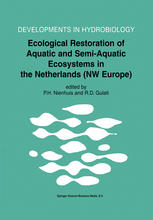

Most ebook files are in PDF format, so you can easily read them using various software such as Foxit Reader or directly on the Google Chrome browser.
Some ebook files are released by publishers in other formats such as .awz, .mobi, .epub, .fb2, etc. You may need to install specific software to read these formats on mobile/PC, such as Calibre.
Please read the tutorial at this link: https://ebookbell.com/faq
We offer FREE conversion to the popular formats you request; however, this may take some time. Therefore, right after payment, please email us, and we will try to provide the service as quickly as possible.
For some exceptional file formats or broken links (if any), please refrain from opening any disputes. Instead, email us first, and we will try to assist within a maximum of 6 hours.
EbookBell Team

4.1
20 reviewsThis work presents the state of the art of aquatic and semi-aquatic ecological restoration projects in The Netherlands. Starting from the conceptual basis of restoration ecology, the successes and failures of hundreds of restoration projects are described. Numerous successful projects are mentioned. In general ecological restoration endeavours greatly benefit from the progressive experience achieved in the course of the years. Failures mainly occur through insufficient application of physical, chemical or ecological principles. Spontaneous colonization by plants and animals, following habitat reconstruction, is preferred. However, sometimes the re-introduction of keystone species (e.g. eelgrass, salmon, beaver) is necessary in case the potential habitats are isolated or fragmented, or if a seed bank is lacking, thus not allowing viable populations to develop. Re-introducing traditional management techniques (e.g. mowing without fertilization, low intensity grazing) is important to rehabilitate the semi-natural and cultural landscapes that are so characteristic for The Netherlands.